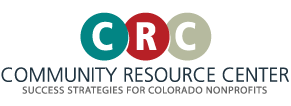Collaborative approach helps mitigate broadband equity issues in the San Luis Valley
Written by CRC Staff, 5/19/2022
The San Luis Valley is known for its beautiful open spaces. But, the low population density in the valley plays a role in unequal access to broadband services.
Every family in the country needs quality broadband so they can access school and health care, work or find new jobs, and start businesses. We know that equity cannot be achieved if certain communities lack technology needed to fully participate in society.
But what happens when you do not have reliable and stable access to the internet?
This issue is prevalent in the San Luis Valley, where low population density (a region the size of the state of Connecticut with 46,000 residents), economic factors and the physical geography of the region have created an environment of unequal access to broadband services keeping residents from accessing essential resources.
Community leaders in the San Luis Valley had been working for years to try and find ways to increase access to reliable broadband internet, but with limited regional success. Previous regional efforts to address this issue came and went, a lack of public demand and insufficient cross-sector collaboration ceased progress. And when the COVID-19 pandemic hit the impact of unequal access to quality, affordable, and reliable internet was made even more apparent.
Since the onset of the pandemic, CRC’s San Luis Valley Regional Leadership Committee (SLV RLC) has worked to address the continued challenge of broadband access to this region. With CRC’s support this group of local nonprofit and community leaders conducted the San Luis Valley Regional Nonprofit needs assessment and took a critical look at the broadband landscape.
“[We] had to provide internet to over 100 families in our community so that they could access their education, and a few resources were available for that. In addition, with the increase in those access services, the overall service in the area has struggled and gone out several times.”
This issue is not unique to San Luis Valley.
The Federal Communications Commission found that 19 million Americans across the country do not have access to broadband service. People of color, older populations and those living in rural areas are more likely to live without consistent internet access, revealing a national disparity.
In fact, 58% of rural Americans say that high-speed internet access is a problem in their community, according to the Pew Research Center.
In October of 2020, the SLV RLC convened the Regional Broadband Collaboration Summit to identify potential projects and discuss key issues around accessibility, affordability, relevancy, and collaborative organizing. The perspectives of 50+ diverse community members were uplifted. Through robust dialogue, regional stakeholders reaffirmed that equity cannot be achieved if certain communities do not have sufficient technology access for participation.
We know that nonprofits in the SLV have the skills and relationships to build bridges between the community, government, and businesses to move past impasses, even with the most complicated challenges.
With CRC’s support the SLV RLC built a wider coalition including former members of the San Luis Valley Development Resources Group Broadband Technical Steering Committee to form a new collaborative the SLV Regional Broadband Collaborative (SLV RBC). A groundbreaking partnership of SLV nonprofit leaders, local government, and regional technical experts are working together to enact lasting change.
With CRC’s backbone support, in 2021 the SLV RBC successfully worked to secure over $550,000 in multi-year funding from The Colorado Trust for the creation of two full-time positions addressing broadband infrastructure and accessibility. These roles are housed within the SLV Council of Governments/Development Resources Group, and with CRC’s support the SLV RBC hired their Broadband Services Manager and SLV Broadband Community Relations Manager in 2021.
These positions have created critical regional capacity to collaboratively meet this need and not miss out on the once in a generation infrastructure funding opportunities. A surge in state and federal funding for rural broadband infrastructure opened a window of opportunity, and because of the work of CRC’s SLV Regional Leadership Committee – the San Luis Valley is uniquely poised to seize the moment.
Kevin Wilkins, Executive Director of the San Luis Valley Development Resources Group, and member of the SLV RBC reflected on the critical role CRC played in stewarding these relationships.
“Community Resource Center was a catalyst in building a ‘broadband bridge’ between the stoic technical connectivity approach of the government/business community with the warm access and affordability concerns of the human resource non-profits.”
Wilkins said that funders appreciated this holistic strategy.
“This dual approach resonated with funders brought to the table by CRC, placing a digital equity blanket to encompass the project.”
The path trailblazed by SLV Regional Broadband Collaborative has peaked interest statewide, and there is interest in replicating this model in other rural regions that face similar complex and multifaceted issues.
At CRC, we meet communities where they are. We believe everyone should have access to meet their basic needs and that nonprofit collaboration plays a key role. This project exemplifies the power of collaboration between nonprofits, government and business to find lasting solutions to community-level issues and to move towards a more equitable Colorado.
It takes significant funding to make these changes across rural communities – beyond what any one agency or entity can fund or organize. To advance rural regional efforts in a way that qualifies for larger pools of transformational funding, diverse community stakeholders must be involved.
This work takes time, patience, resilience, and capacity. We know that when nonprofits have a seat at the table, we can build bridges between the community, government, and business to find solutions, even to our most complicated challenges.


